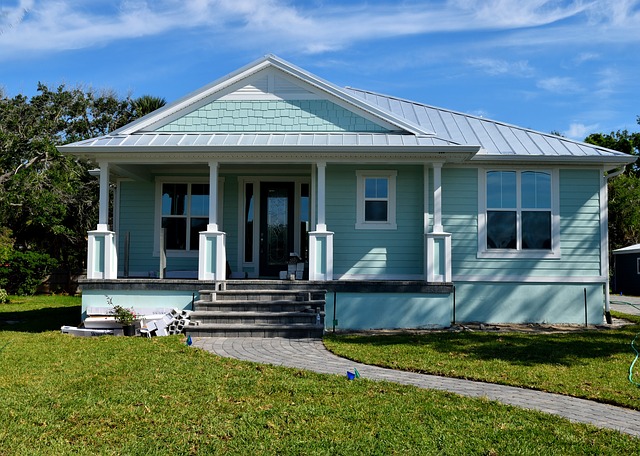There are a few things to consider, when selling a home, that will help you maximize your potential for a better sales price. Seasoned real estate professionals are one of your best resources for these tips.
The Buyer’s First Impression Is Emotional
The first goal is to improve the buyer’s first impression when they see photos or a video of the home, do a drive-by, or make an appointment to view the home. Work with a real estate agent on staging the home and pay particular attention to curb appeal.
Staging means that a home has no clutter. Remove any personal items (family photos, toys, pets, etc.). Make closets less than one-third full. Make sure the home is immaculately clean. Use nice decor and minimal furniture.
Logical Backup For The Buyer’s Emotions
Once a buyer has a positive emotional reaction to the home, then to cement the deal at a good price, offer logical backup to support the emotional reaction. Create a handout that lists the amenities and positive attributes of living in the neighborhood, such as good schools. If possible, sell the neighborhood and the community along with the home.
Answer a buyer’s, often unspoken, question of “Why should I live in this area?”
Like-New Condition
Homes that are in perfect condition usually sell for a premium price and may attract multiple purchase offers. Make any repairs that are necessary to ensure all the systems in the home are in working order.
Another confidence builder for a buyer is when the seller reimburses the fees for the inspections needed, from the escrow closing. Let the buyer choose the inspection companies from a pre-approved list that is acceptable for the seller.
Kitchen and master bathroom upgrades usually have a positive impact on the sales price. New appliances can be included in the sale and covered by a home warranty.
Go Green
Homes that are energy efficient and have an alternative energy system, such as solar, are usually more desirable. This is especially true in parts of the country where the monthly utility bills are very high. Add information about the savings on the monthly utility bills, when compared to other homes that are not green, to the home’s selling brochure.
Summary
Top-selling real estate agents know that homes with these characteristics usually command the best prices, receive more offers, and spend less time for sale on the market. Another benefit is that agents get excited about listing high quality homes. They typically feature them prominently in their listings from the agency, on their website, and in all other marketing efforts.
 There is a joke about gated communities that says the walls are not just there to keep the people out but to keep the residents in. Living in a gated community that is subject to the rules of a homeowners’ association (HOA) can be a pleasant or a severely irritating experience, depending on the perspective a homeowner has about lifestyles.
There is a joke about gated communities that says the walls are not just there to keep the people out but to keep the residents in. Living in a gated community that is subject to the rules of a homeowners’ association (HOA) can be a pleasant or a severely irritating experience, depending on the perspective a homeowner has about lifestyles. A short sale is when the mortgage lender(s) agrees to sell the property for a lower amount than the loan-balance remaining.
A short sale is when the mortgage lender(s) agrees to sell the property for a lower amount than the loan-balance remaining. Foreclosure is a process that happens over many months. There are various opportunities to acquire real estate that is in a different stage of foreclosure, including before the foreclosure process completes. This short guide identifies the different stages and the opportunities that may exist to acquire a property at a discounted price.
Foreclosure is a process that happens over many months. There are various opportunities to acquire real estate that is in a different stage of foreclosure, including before the foreclosure process completes. This short guide identifies the different stages and the opportunities that may exist to acquire a property at a discounted price. An estate sale is the sale of the property owned by a person after a person dies. This sale may include real property, such as a home, and personal property, such as the home’s contents.
An estate sale is the sale of the property owned by a person after a person dies. This sale may include real property, such as a home, and personal property, such as the home’s contents. When investing in real estate, few people think about water as a high priority. All of us have become used to water being readily available and rarely give it a second thought. Most would think that water is only a consideration for farmers who need it to irrigate agriculture. However, due to climate change and population growth, the world is experiencing large impacted areas and major cities that are running out of water.
When investing in real estate, few people think about water as a high priority. All of us have become used to water being readily available and rarely give it a second thought. Most would think that water is only a consideration for farmers who need it to irrigate agriculture. However, due to climate change and population growth, the world is experiencing large impacted areas and major cities that are running out of water. If someone says that they are a “self-made” success who did it all completely by themselves with no help from anyone, they are probably stretching the truth. Success never usually happens in a vacuum. The definition of success is that something is recognized and respected by others.
If someone says that they are a “self-made” success who did it all completely by themselves with no help from anyone, they are probably stretching the truth. Success never usually happens in a vacuum. The definition of success is that something is recognized and respected by others.  Eminent domain is a law that gives the federal, state, county, and municipal governments in the United States the legal right to “condemn” property and then seize it to allow its use for development. Eminent domain is supposed to be used by the government at the various levels to do things for the public benefit, such as to build new roads or construct new public schools.
Eminent domain is a law that gives the federal, state, county, and municipal governments in the United States the legal right to “condemn” property and then seize it to allow its use for development. Eminent domain is supposed to be used by the government at the various levels to do things for the public benefit, such as to build new roads or construct new public schools. The federal government adopted the Housing and Community Development Act in 1977, and the Community Reinvestment Act (CRA) portion was designed to prompt lending institutions to provide mortgages for low- and moderate-income Americans. The underlying reasoning for the CRA was to discourage discriminatory lending practices that inhibited low-income communities and neighborhoods.
The federal government adopted the Housing and Community Development Act in 1977, and the Community Reinvestment Act (CRA) portion was designed to prompt lending institutions to provide mortgages for low- and moderate-income Americans. The underlying reasoning for the CRA was to discourage discriminatory lending practices that inhibited low-income communities and neighborhoods. If you’ve just moved into your new home and you have a pet, you may be thinking of installing a pet door. A pet door is a permanent door feature that is cut into the bottom third of an entry door. Before making a permanent alteration to your door, consider the pros and cons of installing a pet door.
If you’ve just moved into your new home and you have a pet, you may be thinking of installing a pet door. A pet door is a permanent door feature that is cut into the bottom third of an entry door. Before making a permanent alteration to your door, consider the pros and cons of installing a pet door.